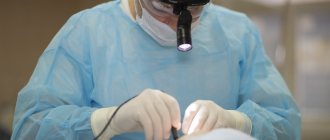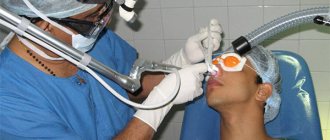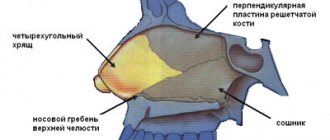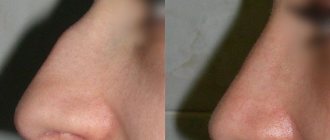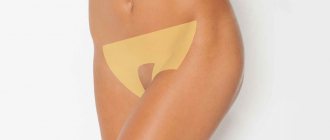Causes
There is still no consensus among experts as to what is the direct cause of the development of the disease. The only thing that is known is that it begins to progress under the influence of the following factors:
- The presence of chronic inflammatory skin diseases, especially rosacea.
- Presence of scabies mite.
- Having problems with the endocrine system.
In addition, doctors identify a set of provoking factors:
- Unfavorable environmental conditions.
- Alcoholism.
- Diseases of the stomach and intestines.
- Chemotherapy for oncology.
- Ultra-violet rays.
- Age-related changes.
- Stress.
Prices
| Disease | Approximate price, $ |
| Prices for diagnosis and treatment of sinus pathologies | 10 370 — 17 560 |
| Prices for the treatment of thyrotoxic goiter | 22 590 — 22 670 |
| Prices for treatment of laryngeal cancer | 6 170 — 77 000 |
| Disease | Approximate price, $ |
| Prices for breast reconstruction after cancer treatment | 41 130 — 59 740 |
| Disease | Approximate price, $ |
| Prices for diagnosing atopic dermatitis | 2 950 |
| Prices for diagnosing systemic lupus erythematosus | 6 350 |
| Prices for melanoma treatment | 32 620 — 57 620 |
| Prices for treatment of basal cell carcinoma | 7 700 — 8 880 |
| Prices for the treatment of malignant skin tumors | 4 420 — 5 420 |
| Prices for diagnosing psoriasis | 2 640 |
Classification
Depending on the degree of tissue damage, the breadth of growth and skin color, four groups of rhinophyma are distinguished:
- Ferrous. Lumps of soft consistency appear in the area of the wings and tip of the nose, the surface of the skin is greasy, there is a sharp increase in the number of sebaceous glands, and pus may be released.
- Fibrous. The skin of the nose grows, the affected surface is smooth and purple in color.
- ibroangiomatous. It is characterized by the presence of foci of inflammation and deep pustules filled with blood and pus, as well as the formation of dried crusts. Accompanied by severe itching and pain.
- Actinic. This form often affects people who are sensitive to sunlight. The tissues of the nose grow evenly, acquiring a bluish color. There are no pustules, sebum is separated moderately.
Clinical picture
. The following forms of rhinophyma are distinguished:
- fibrous-angiomatous;
- glandular;
- fibrous;
- actinic.
The fibrous-angiomatous form is characterized by uniform enlargement of the nose due to hypertrophy of the skin elements.
The nose does not lose its configuration and acquires a bright red color due to the abundance of blood vessels in this area. With the glandular form of rhinophyma, knobby formations form on the nose. Gradually they merge into large growths, nodes and bumps. The nose becomes deformed and disfigures the face. The nodes are soft to the touch, non-ulcerated, and have a bluish color. The sebaceous glands are enlarged and when pressure is applied to them, contents are released that have a very unpleasant odor.
The fibrous form is characterized by a bluish-violet color of the nose, many telangiectasias (vascular patterns of blue or red shades of various shapes, resulting from dilation of the blood vessels of the skin or mucous membrane). The sebaceous glands are hyperplastic (enlarged). The nose changes its shape and the skin becomes lumpy.
The actinic form is characterized by a uniform increase in the size of the nose. The color becomes brownish with a bluish tint. Telangiectasias (small red, pink or blue oblong spots on the skin filled with a network of small blood vessels visible under the skin) are located mainly on the wings of the nose. The pores are enlarged, purulent pimples, called pustules, are not observed.
Quite often, rhinophyma is accompanied by blepharitis (inflammation of the edges of the eyelids) and conjunctivitis (inflammation of the eye mucosa). This is due to inflammatory processes in the paranasal areas of the skin. Diagnostics. Instrumental research methods are not required to diagnose rhinophyma. Each form has its own characteristic features:
- fibrous-angiomatous form. Vasodilation and inflammation predominate.
- glandular form. There is severe hyperplasia of connective tissue and sebaceous glands, dilatation of blood vessels.
- fibrous form. It is based on a diffuse increase (hyperplasia) of connective tissue;
- actinic form. Increase in the number of elastic fibers.
Rhinophyma must be distinguished from reticulosarcomatosis (malignant tumor) and leprosy (leprosy).
Friends! Timely and correct treatment will ensure you a speedy recovery!
Methods of treatment and plastic correction of the nose
Rhinophyma proceeds rather slowly and, for the time being, does not cause any unpleasant sensations. The skin becomes rough, the patient feels pain and itching. But in the end, it creates a visible cosmetic defect, contributes to difficulty breathing, and deformation of the cartilaginous components of the nose. Therefore, the sooner the pathological growths are removed, the less physical and psychological discomfort a person will experience.
The method of treating rhinophyma is removal. The goals of the operation: elimination of tubercles, excision of excess glandular tissue, reduction of the nose and giving it its original shape. There are several methods.
- Dermabrasion. It is a mechanical grinding of affected tissues and removal of the epidermis, restoring healthy skin.
- Laser and radio wave. These methods work on the affected areas, vaporizing the affected tissue and restoring the shape of the nose. They are distinguished by more gentle procedures, more effective procedures and a short recovery period.
The listed methods, however, have one common drawback - they are applicable in mild and moderate stages of rhinophyma, when there are isolated bumps on the skin, and the tissue growth is not too significant. In all other cases, when the disease process is in a more advanced state, surgery is necessary.
To do this, two cuts are made: longitudinal, along the middle part, and transverse from one wing to the other. As a result, three large flaps of skin are obtained, from under which the affected tissue is extirpated. If the hypertrophied areas lie too deep, then a wedge-shaped excision is made along the entire thickness of the wings (lengthwise and across).
Surgical intervention allows for complete removal of abnormal nodes, elimination of emerging deformities, and plastic correction of the length and shape of the nose.
Relapse Prevention
After the operation, it is necessary to follow a number of instructions from the surgeon to ensure normal healing and eliminate the risk of re-development. Within 1 month you must:
- Avoid exposure to ultraviolet rays. Use sunscreen in the future.
- Avoid sudden temperature changes.
- Adhere to proper nutrition (diet).
- Do not visit baths, solariums, spas.
"Dr. Panov's Clinic" is a professional medical center in Novosibirsk that provides complete removal of rhinophyma and elimination of nasal deformities. Reliable, experienced specialists will select the most suitable way to get rid of the defect.
Diagnosis of the disease
This disease can be determined after a visual examination of the patient. The doctor sees irreversible changes in the structure of the nose, so after studying the complaints and conducting a visual examination, he makes a final diagnosis.
Diagnostics includes:
- Analysis of complaints and medical history:
- changes in the relief and color of the skin in the nose area, pain and itching in the nose area, etc.;
- how long ago the symptoms and complaints indicated by the patient appeared;
- the presence of concomitant factors (chronic diseases of the gastrointestinal tract, endocrine or autoimmune diseases).
- General examination: changes in the relief and contours of the nose, the presence of compactions and growths in the form of bumps/tubercles, a bluish-purple tint of the skin in the nose area.
- Biopsy (sampling of a section of altered tissue) and conducting a histological examination to determine the type of rhinophyma and exclude signs of its malignancy.
- Consultation with a dermatologist and oncologist is also possible.
Despite the striking and specific clinical manifestations of rhinophyma, it must be differentiated from demodicosis, since rhinophyma can be complicated by demodicosis, but the latter is not the main pathogenetic mechanism; Cutaneous T-cell lymphomas, sarcoidosis, and lymphatic leukemias may also present as nasal skin growths.
Vasomotor rhinitis
Vasomotor rhinitis refers to non-allergic, non-infectious rhinitis. There are medicinal, hormonal, reflex and idiopathic vasomotor rhinitis. It is characterized by impaired nasal breathing, nasal congestion and narrowing of the nasal cavity as a result of swelling and swelling of soft tissues.
Reasons for the development of vasomotor rhinitis:
- low air temperature;
- wet air;
- eating too hot or spicy food;
- frequent consumption of alcoholic beverages;
- experiencing emotional stress;
- inhalation of tobacco smoke;
- smog, air pollution;
- strong odors;
- hormonal changes in the body;
- long-term use of vasoconstrictor drugs;
- use of contraceptives or medications that lower blood pressure;
- thyroid disease, etc.
Clinical signs and symptoms of vasomotor rhinitis
The main symptoms of this form of rhinitis can be considered difficulty in nasal breathing and watery discharge from the nose. Sneezing attacks are less common.
Most often, vasomotor rhinitis is confused with atypical forms of allergic rhinitis. Therefore, a thorough examination is necessary.
1 Endoscopy of the nasal cavity in MedicCity
2 Endoscopy of the nasal cavity in MedicCity
3 Endoscopy of the nasal cavity in MedicCity
Allergic rhinitis
Allergic rhinitis is an inflammation of the mucous membranes of the nose, which is based on an allergic reaction of the body to any allergen.
Possible allergens:
- household or book dust;
- dust mite;
- insect bites;
- plants;
- Food;
- medications;
- molds and yeasts.
You can read more detailed information about allergic rhinitis here.
Enlarged pores, how to get rid of them at home. Narrowing pores at home
You can get rid of enlarged pores at home, without resorting to the help of specialists. The greatest effect can be achieved if cosmetic procedures are performed regularly. Without basic daily care, it will not be possible to narrow pores even in the most expensive beauty salons. To get rid of enlarged pores on the face, you need to cleanse your face twice a day with a special washing gel, preferably containing fruit acids. After this, the skin should be treated with a tonic for oily skin. Compositions based on salicylic acid, cucumber or lemon juice have an excellent effect of narrowing pores. You can purchase these cosmetics at any store or pharmacy, preferably after consultation with a cosmetologist. Oily skin does not need additional intensive hydration, but it also needs nutrition. Therefore, the day cream should have a light texture, a mattifying effect and be appropriate for the woman’s age. Night cream should be nourishing, but designed specifically for oily skin. You should be more careful in choosing foundations, since these cosmetics clog enlarged pores and provoke the formation of even more skin defects. The concealer must be non-comedogenic and free of silicones. If necessary, you can use local corrective agents. Serums with a pore-tightening effect should be used in courses once a day for 1-2 weeks. Once or twice a week, you should use a homemade chemical peel or scrub and mask to tighten the pores. It is better to use a scrub with synthetic components; they do not injure the skin. Scrubbing elements of natural origin are crushed fruit seeds. They can injure the skin and cause inflammation. You can buy ready-made masks or prepare them yourself. The advantage of home-made cosmetics is the guaranteed freshness of the product and natural composition. The consistency of all mixtures should be thick enough so as not to spread over your face or dry out. The composition should be prepared in glass or ceramic containers. The masks are applied to a clean face and left for 15-20 minutes. Then they are washed off with warm water and a pigment tightening cream is applied. Using masks allows you to quickly get rid of enlarged pores and prevent the appearance of rashes. They are most effective after deep cleansing the skin with scrub, acid or enzymes.
Cosmetics for reducing pores on the nose
Cosmetics play an important role in narrowing pores, so you need to choose them carefully. On sale there are various foams and gels for washing, tonics and lotions, serums and creams, emulsions and masks, the action of which is aimed at reducing the activity of sebum production. Such products in combination should solve several problems at once:
- deep cleanse;
- moisturize well;
- matte;
- regenerate at the cellular level;
- protect from ultraviolet rays.
According to reviews, Bioderma Sebium Pore Refiner concentrate effectively tightens pores. It improves the condition of the skin, normalizes oil secretion, gives the face radiance, evens out the structure and tone. Also working well are Dermalogica Precleanse Wipes, which quickly and effectively remove excess oil and leave you feeling fresh.
Clay masks from L'Oréal Paris, containing kaolin, ghassoul and montmorillonite, cleanse, moisturize and have an antioxidant effect on the skin. The product softens and mattifies the face, adds radiance, and exfoliates dead skin particles.
For problem skin, the Pure Babor intensive mask is suitable, which eliminates oily shine, and also treats and prevents acne. The product inhibits the growth of bacteria, relieves irritation, tones and increases the level of protective properties of the skin. Small scars during the post-acne period are smoothed out, and pores are reduced.
Combination and oily skin needs the highest quality cleansing. Cosmetologists recommend paying special attention to the face in the summer, since it is during this period that the secretion of the garden from the ducts occurs especially intensely due to the heat.
It is recommended to contact a cosmetologist for advice and recommendations regarding the most effective remedies for a particular case. The doctor will be able to competently assess the condition of the skin and recommend those names of creams and masks that will best cope with enlarged pores.
Home Remedies
Homemade products can be no less effective on the condition of the skin.
Compress and mask with calendula and chamomile
A tonic based on calendula and chamomile can cope with enlarged pores. You should take a tablespoon of a mixture of dried flowers and pour 250 ml of boiling water. Let it brew for 30 minutes, strain and blot a napkin in the liquid. Apply the resulting compress to your previously cleansed face and lie down, relaxing. Such plants have an astringent effect, perfectly tone and tighten the skin.
Based on the previous composition, you can prepare a mask. You need to add egg white and a couple of drops of lemon juice to a tablespoon of herbal infusion. Apply the finished product to a cleansed, pre-steamed face and leave for 20 minutes. Rinse off with plain water.
Clay mask
A clay mask is prepared from one tablespoon of clay and clean water. Having obtained the consistency of thick sour cream, add a spoonful of lemon juice to the mixture. The composition is applied to the face and left until completely dry. Rinse the product off the skin with cold water. The mask perfectly cleanses the skin and tightens pores.
Gelatin mask
Combine gelatin and milk in a 1:2 ratio. Leave the mixture in a warm room for five minutes, then heat it in the microwave for 20 seconds at medium power. Apply the resulting mask to a pre-steamed face, making several layers. It is important to avoid the area around the eyes, hair and eyebrows. After the last layer has completely dried, you need to leave the mask on your face for another 15 minutes, and then carefully remove the film from the skin by lifting the edges.
Oatmeal mask
The product allows you to get perfectly smooth skin. You need to take a few tablespoons of oatmeal and the pre-beaten white of one egg. Apply the composition to the face and leave for 20 minutes, then rinse with warm water. Try not to stretch the skin. After the procedure, treat the cover with herbal infusion.
Honey scrub
Honey has many beneficial properties. You need to take a few spoons of this sweet product and add a little lemon juice. Apply the finished composition to the facial skin with massaging movements, carefully working out problem areas. Then leave the scrub for another 10 minutes and rinse.
Subtleties of cleaning and preparing the skin of the nose before narrowing sessions
You cannot reduce pores that are “clogged” with dust and sebum. Be sure to clean them thoroughly first. Not only store-bought scrubs are suitable for this, but also home remedies.
Soda scrub
Baking soda effectively removes dead skin cells on the face. You need to combine it with water until you get a paste consistency, then apply it on your face in a circular motion, paying special attention to the nose, forehead, chin and other problem areas. For oily skin types, it is advisable to use a mixture of baking soda and hydrogen peroxide.
Activated carbon and gelatin mask
This is another effective composition for cleansing the skin. You need to pour one spoon of gelatin with a spoon of milk, and then add a crushed charcoal tablet. Microwave the mixture for 10 seconds, then stir and place back in the oven for 3 seconds. The resulting viscous product is applied to problem areas of the face and left for 15 minutes. A film is formed, which can be removed by lifting the edge with your fingernail. The result after such a pore cleansing session is noticeable immediately.
Hypertrophic rhinitis
The disease hypertrophic rhinitis is characterized by an increase in the mucous membrane of the nasal turbinates, which entails difficulty breathing due to nasal congestion.
Factors contributing to the disease:
- hypothermia of the body;
- long-term use of vasoconstrictor drugs;
- infections in the nasopharynx;
- contaminated air;
- alcohol;
- smoking;
- presence of allergies.
Hypertrophic rhinitis can occur due to the following diseases:
- diseases of the endocrine system;
- diseases of the heart and blood vessels;
- congenital or acquired curvature of the nasal septum;
- pathology of the neuro-reflex function of the nose;
- untreated catarrhal, vasomotor and chronic rhinitis.
How does the disease manifest?
Hypertrophic rhinitis is characterized by a stuffy nose and difficulty breathing, and vasoconstrictor drops do not eliminate these symptoms. With hypertrophic rhinitis, the following symptoms appear:
- the nose does not breathe;
- mucous and purulent discharge from the nose;
- recurrent headaches;
- dry mouth and nasopharynx;
- disturbances of taste and smell.
Chronic rhinitis
Chronic rhinitis is a long-term, chronic inflammation of the nasal mucosa, which appears as a result of the negative influence of microbes, as well as some environmental factors (dust, air pollution) on the nasal mucosa.
Types of chronic rhinitis
- allergic (seasonal, allergies to plants and products);
- infectious (occurred as a result of infectious diseases);
- non-allergic, non-infectious rhinitis (medicinal rhinitis, hormonal rhinitis, rhinitis of the elderly).
